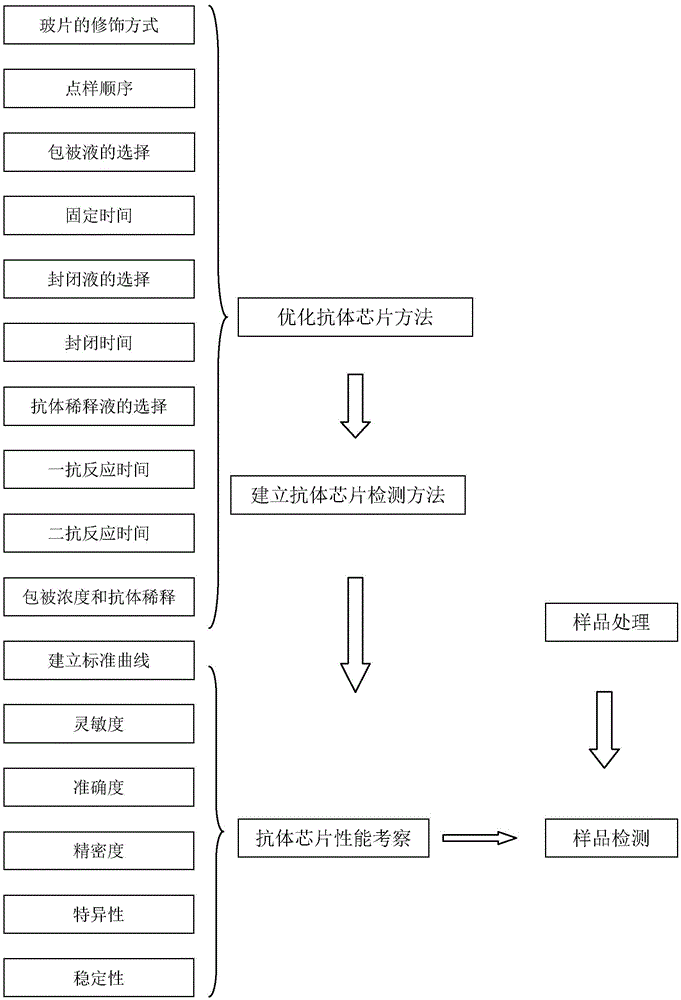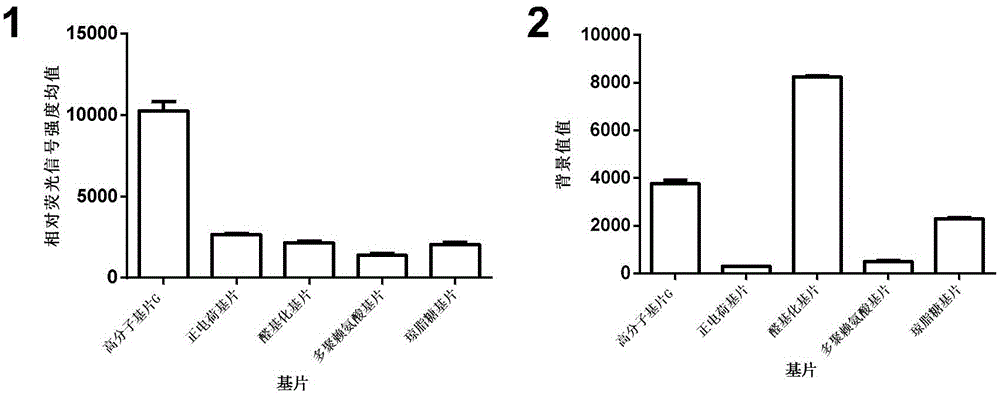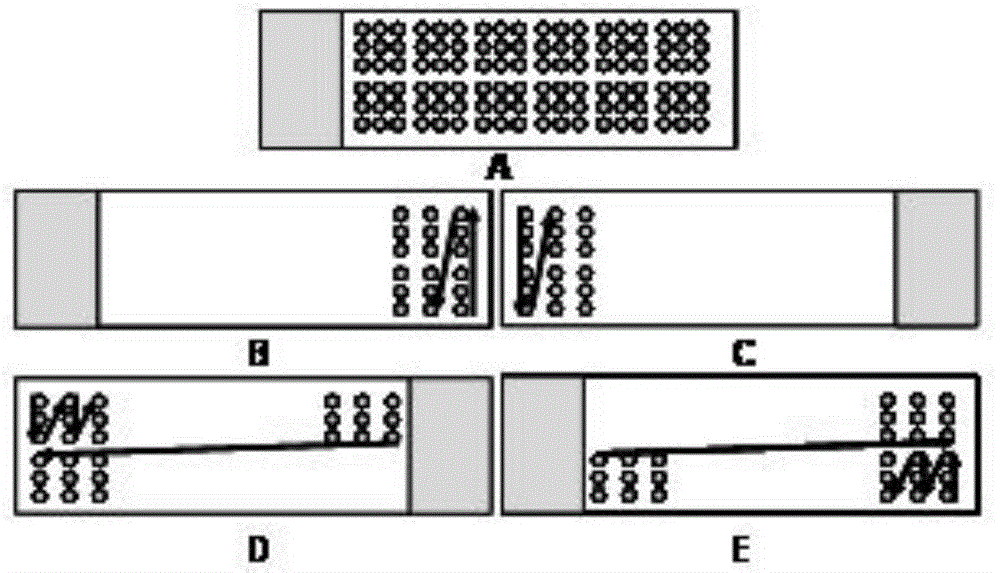Antibody microarray kit and method for detecting residue of aminoglycoside antibiotics in food
An aminoglycoside and antibody chip technology, which is applied in the direction of testing food, material inspection products, measuring devices, etc., can solve the problems of inability to detect aminoglycoside antibiotics at the same time, low detection sensitivity, etc., and achieve good market application value and high detection efficiency. , the effect of less harm to human body and environment
- Summary
- Abstract
- Description
- Claims
- Application Information
AI Technical Summary
Problems solved by technology
Method used
Image
Examples
Embodiment 1
[0039] The synthesis of embodiment 1 aminoglycoside coating former
[0040] 1) Synthesis of Amikacin Coating Progen
[0041] Weigh 148.0 mg of amikacin and 40.0 mg of OVA and dissolve in 12 mL of pure water (pH7.4), stir evenly, then add dropwise EDC430.00 mg dissolved in 4 mL of pure water, and stir for 8 hours at room temperature. Finally, the reaction solution was transferred into a dialysis bag, and dialyzed in PBS solution (pH7.4) at 4° C. for 4 days. Freeze-dry after centrifugation and store at -20°C for later use.
[0042] 2) Synthesis of sisomycin coating agent
[0043] Dissolve sisomycin 20.0mg and OVA 200.0mg in 20mL PBS solution (pH7.4), stir well, then slowly add 80.00mgEDC dissolved in 1mL pure water. The reaction was stirred at room temperature for 2 hours. Finally, the reaction solution was transferred into a dialysis bag, and dialyzed in PBS (pH7.4) solution at 4° C. for 4 days. Freeze-dry after centrifugation and store at -20°C for later use.
Embodiment 2
[0044] The selection of embodiment 2 chip parameters
[0045] 1) Selection of substrates: Spot 0.5 μg / mL Cy3-OVA on polylysine slides, positively charged slides, core polymer substrate G, aldehyde-based slides, and agarose-modified slides respectively, and use The InnoScan 700A scanner scans and stores the data, the results are shown in the attachment figure 2 . From diagram 2-1 It can be clearly seen that the relative fluorescence signal intensity of the polymer substrate G is the highest, indicating that the polymer substrate G has the best adsorption to our sample; from Figure 2-2 It can be seen that the background value is lower than that of the aldehyde group. Considering the two factors of adsorption and background value, the commercial crystal core polymer substrate G was finally selected as the substrate.
[0046] 2) Selection of different spotting order: according to the following four ways respectively: B is from right to left, from bottom to top; C is from le...
Embodiment 3
[0054] Embodiment 3 Preparation of antibody chip
[0055] 1) Two kinds of aminoglycoside coating agents and monoclonal antibodies used in the assessment
[0056] Determine the titer of the antibody according to the ELS1A operating procedure, dilute the original coating solution into a series of working concentrations with carbonate buffer, coat overnight at 4°C, shake off the coating solution, add 250 μL of washing solution to each well, and let it stand for 30 seconds , shake out the washing solution, pat dry, repeat washing 3 times, pat dry, add 250 μL of blocking solution to each well, place in a 37°C wet box for sealing for 1 hour, shake off the blocking solution, wash 3 times, and pat dry. Dilute the antibody to 1:100, 1:200, 1:400, 1:800, 1:1600, 1:3200, 1:6400, 1:12800, add 50 μL PBS to each well, and 50 μL to dilute a series of antibody concentrations, 37 Incubate in a wet box at ℃ for 30 min, shake off the liquid in the well, wash 3 times, pat dry, dilute the HRP-lab...
PUM
| Property | Measurement | Unit |
|---|---|---|
| Sensitivity | aaaaa | aaaaa |
| Sensitivity | aaaaa | aaaaa |
Abstract
Description
Claims
Application Information
 Login to View More
Login to View More - R&D
- Intellectual Property
- Life Sciences
- Materials
- Tech Scout
- Unparalleled Data Quality
- Higher Quality Content
- 60% Fewer Hallucinations
Browse by: Latest US Patents, China's latest patents, Technical Efficacy Thesaurus, Application Domain, Technology Topic, Popular Technical Reports.
© 2025 PatSnap. All rights reserved.Legal|Privacy policy|Modern Slavery Act Transparency Statement|Sitemap|About US| Contact US: help@patsnap.com



